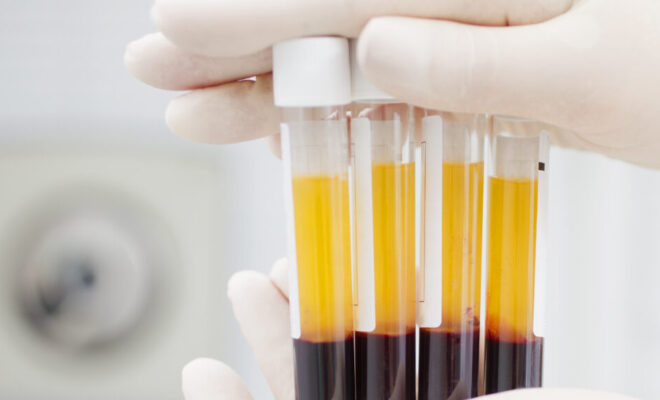The Essential Guide To Blood Plasma

You are most likely wondering what is blood plasma? Generally speaking, blood plasma is a light amber colored liquid component of blood that is made up of proteins in suspension. This fluid is also a part of the extracellular fluid that is found in the intravascular space and is the main component of blood that makes up approximately 55% of total blood volume.
Immunoglobulins
Biologically active immunoglobulins are a group of glycoproteins that are involved in innate and adaptive immunity. They participate in defending against viral antigens, as well as antitoxin and antibacterial immune responses. These glycoproteins are classified into several classes with different properties.
Immunoglobulins are found in blood plasma. These glycoproteins play an important role in the treatment of various diseases. They are also associated with the development of chronic diseases. Generally, immunoglobulins are prepared from human or animal blood plasma. The concentration of these glycoproteins in blood plasma is a critical factor in the diagnosis of various disease conditions. Moreover, the amount of these proteins in blood plasma may be correlated with the presence of cerebrospinal fluid.
These glycoproteins are present in solid form in the blood plasma and may contain contaminating protein. Thus, a separation of these proteins from the whole blood is necessary. In addition, depletion of aggregates is required before a parenteral administration can take place.
Coagulation
Several systems have been proposed for monitoring the coagulation of blood plasma in real time. These systems involve the use of acoustic signals from the plasma sample.
The acoustic signal is filtered using a second-order Butterworth filter. The Doppler shift of the ultrasonic signal is then digitized and transferred to the computer. A special computer program is then used for the real-time data analysis.
For the acoustic monitoring of coagulation in blood, an averaged modulus of amplitude (AMA) curve is plotted. This curve is then normalized on the initial signal level. For comparison, the same AMA curve is also plotted for the whole blood.
The acoustic signal was filtered with a second-order Butterworth filter and then digitized in the 44100 Hz frequency band. This filtered signal was then averaged over two-second time intervals. In addition, the Doppler shift was filtered and incorporated into a special computer program. This program was written in Python.
The acoustic signal produced by the liquid phase prothrombin time test is different from the acoustic signal generated by the dry reagent prothrombin time assay. In both tests, a sample containing a coagulation factor VII or VII(a) is impregnated with reagents to induce coagulation in the plasma.
Platelet rich plasma therapy
Whether you are recovering from a sports injury or you’re suffering from chronic overuse injuries, Platelet rich plasma therapy can help. This revolutionary non-surgical treatment is used to improve joint pain and to rebuild damaged tendons.
The procedure is simple. A physician takes blood from the patient’s arm, then injects it into the injured area. The resulting injection is said to stimulate healing and speed up recovery.
Depending on the condition being treated, there may be several injections. Patients are asked not to clean or bathe the area for 48 hours, but over-the-counter pain medications can be helpful.
The injection process can take 30 minutes or less. During the procedure, the doctor numbs the injured area with local anesthesia and injects the platelet-rich portion of the blood. An ultrasound machine helps to guide the needle to the correct site.
The growth factors present in the platelet-rich plasma have been known to promote healing and cell reproduction. The plasma component of the blood also contains proteins and glucose.
COVID-19 treatment
Earlier this year, the Food and Drug Administration (FDA) approved a new COVID-19 treatment of blood plasma. The therapy consists of blood plasma donated by people who have recovered from the virus. It contains antibodies that neutralize the virus. It is thought that this type of therapy may be useful in hospitalized patients who have been recently infected with the virus.
A national clinical trial is being conducted by Johns Hopkins University and the University of California at San Diego. This study will investigate the effects of early treatment of COVID-19 with antibody-rich convalescent plasma. The researchers aim to build a network of hospitals nationwide to treat COVID-19 patients.
This trial is part of a larger national effort to test plasma from recovered patients for use in COVID-19 patients. It will also test whether plasma can prevent infection in people without an infection.









